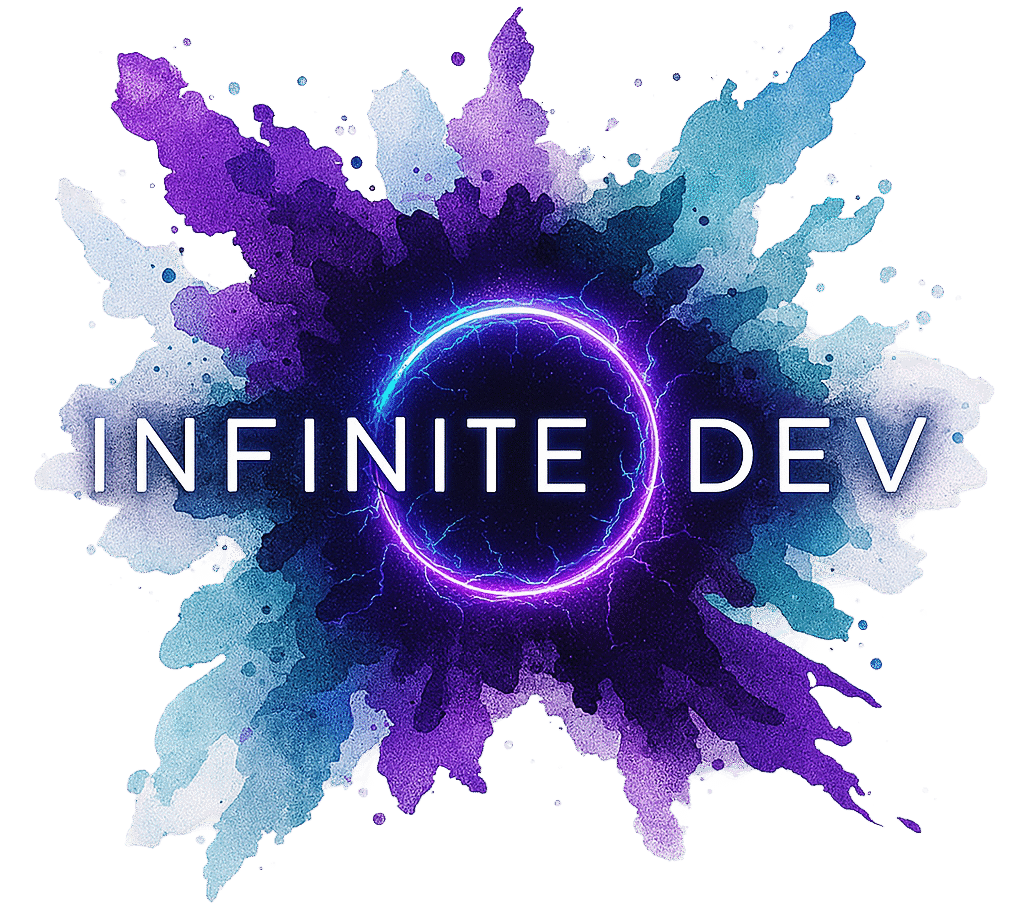Artificial Intelligence Web Development – Future-Ready Solutions
Smart, Scalable, and Fast
We build AI-driven websites and applications designed for speed, automation, and user engagement. From personalized content delivery to intelligent chatbots and predictive analytics, every solution we create adapts to your users’ behavior to maximize conversions.
What We Do
- AI-Powered Websites – Self-optimizing pages that learn from visitor interactions.
- Custom Chatbots & Virtual Assistants – 24/7 automated support and lead generation.
- Predictive Analytics – Data-driven insights for smarter business decisions.
- Automated Workflows – Reduce manual work with integrated AI task automation.
- E-Commerce AI – Product recommendations, smart search, and dynamic pricing.
Why Choose Infinite Devs?
We focus on building forward-thinking web solutions that grow with your business. Every project is tailored for performance, scalability, and a seamless user experience because AI isn’t just a trend, it’s the future of the web.
Ready to Upgrade?
Transform your site into an intelligent, revenue-driving machine. Let’s build something smarter today.
Popular AI Models in 2025 – Quick Breakdown
1. ChatGPT (OpenAI)
- Best For: Conversational AI, content generation, coding help, general knowledge queries.
- Strengths:
- Highly polished for natural conversation.
- Fine-tuned for reasoning, writing, and multi-step logic.
- Plugins and API integrations are robust, making it easy for devs to build tools on top.
- Weaknesses:
- Knowledge cutoff unless connected to web.
- Can sometimes “hallucinate” details.
- Paid tiers (like GPT-4 Turbo) needed for the best performance.
2. Grok (xAI, Elon Musk’s project)
- Best For: Edgy, real-time info and integrated with X (Twitter).
- Strengths:
- Direct access to X data for fresh news and trends.
- More “personality”—marketed as witty and less filtered.
- Weaknesses:
- Still less mature in reasoning and deep research tasks compared to ChatGPT.
- Mostly locked into the X ecosystem right now.
3. Gemini (Google)
- Best For: Multimodal tasks—images, video, and text in one flow.
- Strengths:
- Deep integration with Google’s ecosystem (Docs, Search, YouTube).
- Strong at summarizing search-related info.
- Gemini 1.5 now handles long context windows (entire books or long codebases).
- Weaknesses:
- Performance can feel inconsistent—sometimes too cautious.
- Privacy concerns since it’s heavily tied to Google services.
4. Claude (Anthropic)
- Best For: Ethics-conscious businesses and long-document analysis.
- Strengths:
- Massive context window (100k+ tokens).
- Excellent at summarization, compliance-friendly writing, and professional tone.
- Weaknesses:
- Less creative than ChatGPT.
- Limited integrations compared to OpenAI’s ecosystem.
5. Meta’s LLaMA (and Derivatives)
- Best For: Open-source development and custom fine-tuning.
- Strengths:
- Free/open-source, allowing developers to build private AI solutions.
- New LLaMA 3 models rival GPT-4 in some benchmarks.
- Weaknesses:
- Requires technical setup and hosting.
- No ready-made polished chatbot like ChatGPT or Gemini.
Which to Use?
- For Business Sites → ChatGPT or Claude.
- For Real-Time Trends → Grok.
- For Deep Web/Search Integration → Gemini.
- For Custom AI Apps → LLaMA or fine-tuned open-source models.
Specialized & Focused AI Models – Niche Powerhouses
While giants like ChatGPT and Gemini dominate general-purpose AI, smaller, specialized models are making big waves by focusing on specific tasks. Here are some worth mentioning:
1. Blackbox.ai (Coding)
- What It Does Best: Auto-completes, explains, and refactors code.
- Why It Stands Out:
- Trained heavily on public codebases, making it more “developer-minded.”
- Great for debugging and converting between programming languages.
- Lightweight and fast—ideal for live coding sessions.
- Best Use Cases: Rapid prototyping, code reviews, and teaching programming.
2. Perplexity AI (Research & Fact-Checking)
- What It Does Best: Real-time, citation-backed answers.
- Why It Stands Out:
- Sources are displayed, making it reliable for academic or journalistic research.
- Web-first approach—great for pulling the latest data.
- Best Use Cases: Market research, content fact-checking, competitive analysis.
3. Jasper (Marketing Copywriting)
- What It Does Best: Marketing copy, ad headlines, and brand-focused content.
- Why It Stands Out:
- Templates specifically built for social ads, blogs, and product descriptions.
- AI trained with tone-of-voice customization for consistent brand messaging.
- Best Use Cases: E-commerce product pages, email campaigns, SEO copy.
4. MidJourney / Leonardo AI (Visual Content)
- What They Do Best: AI art generation for branding and creative assets.
- Why They Stand Out:
- MidJourney excels at stylized, high-quality imagery.
- Leonardo focuses on speed and commercial-use flexibility.
- Best Use Cases: Website banners, product mockups, ad creatives.
5. Runway (Video & Motion Graphics)
- What It Does Best: AI-powered video editing, scene generation, and motion graphics.
- Why It Stands Out:
- Great for marketers and creators who need quick video production.
- Integrates with existing editing software.
- Best Use Cases: Social media reels, product promos, animated explainers.
